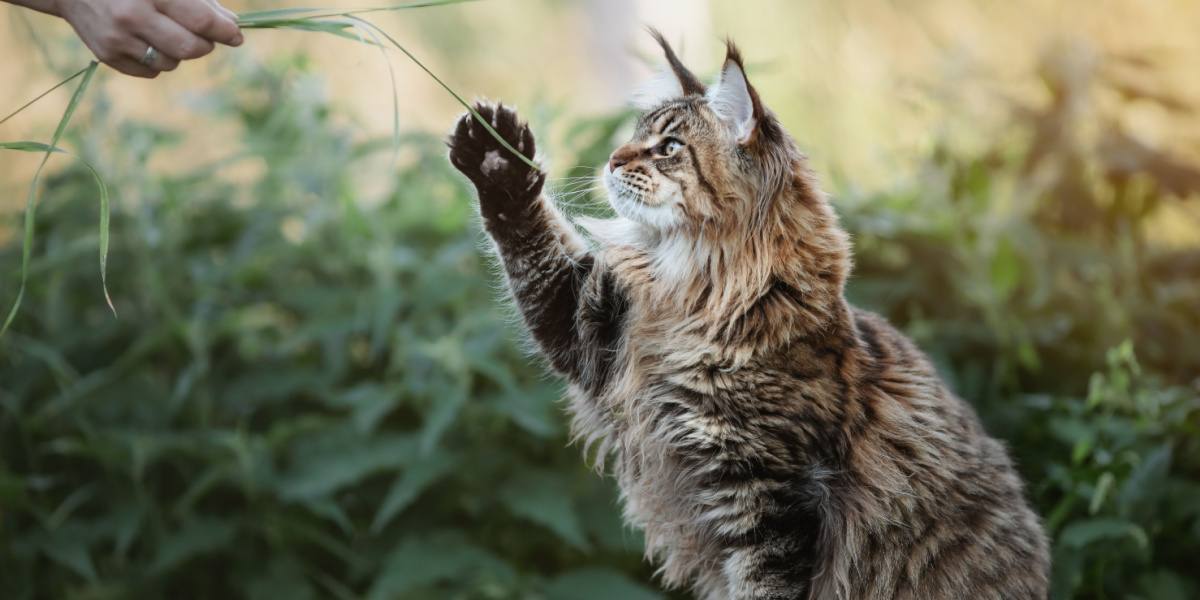
Cats are instinctively exploratory, territorial hunters and climbers. Spending time outdoors is fun, reduces stress, and provides lots of stimulation for cats. An enriched cat-friendly garden that keeps your feline safe benefits their welfare and keeps them out of harm’s way.
Let’s discuss ways to create a beautiful garden that allows you and your cat to enjoy endless adventures.
Also Read: 10 Hacks To Keep Cats Away From Plants
Cats benefit greatly from having a safe, enclosed outdoor space to explore, hang out, or just hide away. Cats enjoy outdoor places where they can hide, climb, perch, scratch, sunbathe, etc. There are a number of things to be aware of and avoid in your cat-friendly garden, such as poisonous plants, exposure to insecticides and herbicides, and other toxic chemicals.Key Takeaways
Why Make A Cat-Friendly Garden?
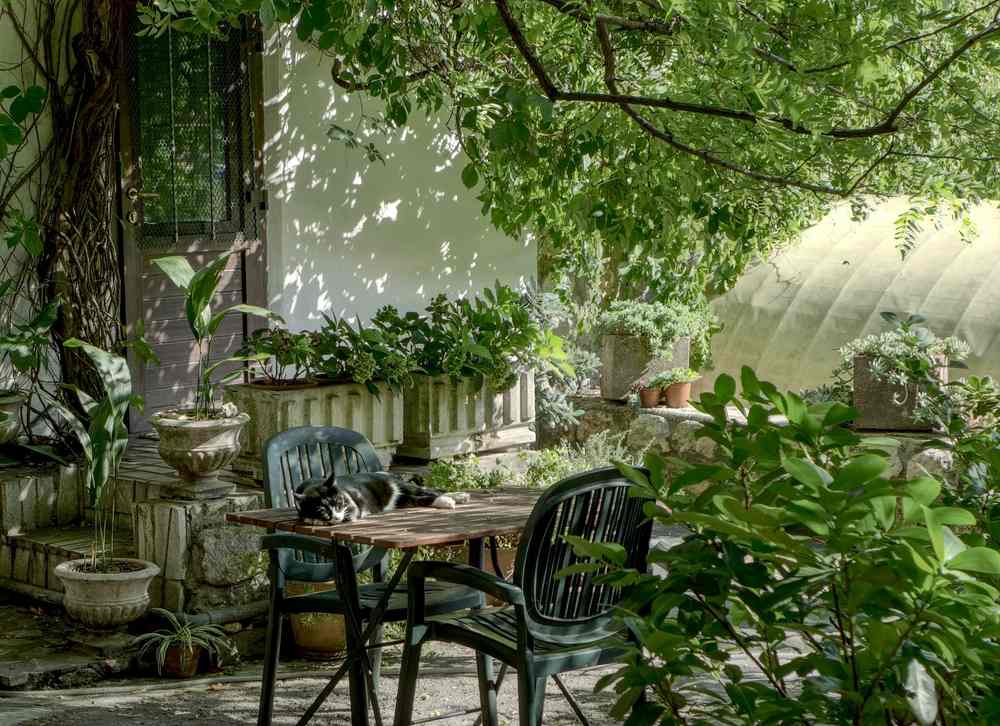
Having a safe, enriching outdoor space for your cat to enjoy enhances their quality of life immensely.
Indoor cats need an outdoor enclosure or a fenced garden to give them a more extensive ecosystem to explore. The outdoors offers ample space for interactive play and stimulates chasing, leaping, and pouncing.
An outdoor space that is cat-friendly allows distance from stressors and the ability to cope with change. It also enables escape from significant changes. New babies, unfamiliar visitors, and home renovations are a few examples.
Beware of vegetables and flowers that can cause feline toxicity or a skin rash. Cats don’t usually consume poisonous plants but may nibble herbs and grass to remedy digestive upsets. Choose cat-safe plants that kitties enjoy rolling in or lounging on.
Although cats are fussy eaters, poisoning can still occur due to their natural curiosity. Be cautious of poisonous substances in your yard shed that cats can access. Cut the use of herbicides, fertilizers, and pesticides and keep them out of cats’ reach.
Cats are cautious animals. Free-roaming felines avoid large open spaces where they feel vulnerable. They use hedgerows, woodlands, and garden boundaries, often taking the safest route. Thus, cats tend to avoid large lawns or open concrete yards. Divide your cat-friendly garden into small spaces by planting shrubs, hedges, trellis, and pot plants to give your cat seclusion and safety.
Also Read: How To Make A Cat Feel Safe In 10 Simple Steps
What To Put In A Safe Cat-Friendly Garden
The key to a cat-friendly garden is providing all the resources to fulfill your cat’s needs. These include:
1. Hiding Spots
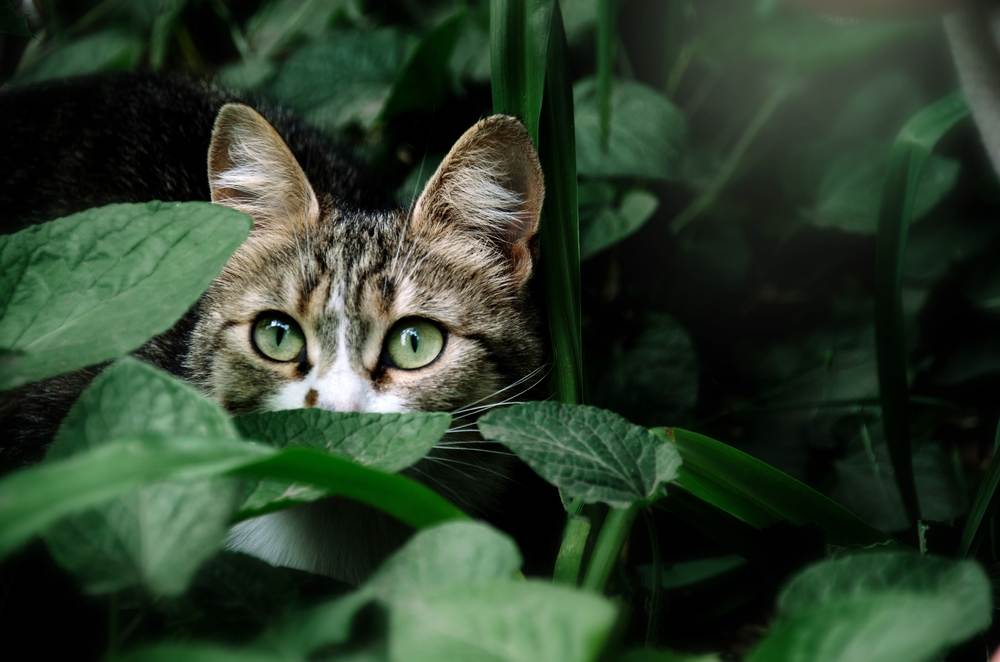
Cats feel safest when they have good hiding spots to duck into.
Cats can feel vulnerable outdoors. Providing hiding places from stressors (i.e. other cats) can make them feel safe outside. Create this with weeping willow trees or dense shrubs that offer seclusion. As the twigs and leaves move in the wind, they can also provide a source of play.
Also Read: My Cat Is Hiding And Acting Weird: When to Worry
2. Shelter From The Elements
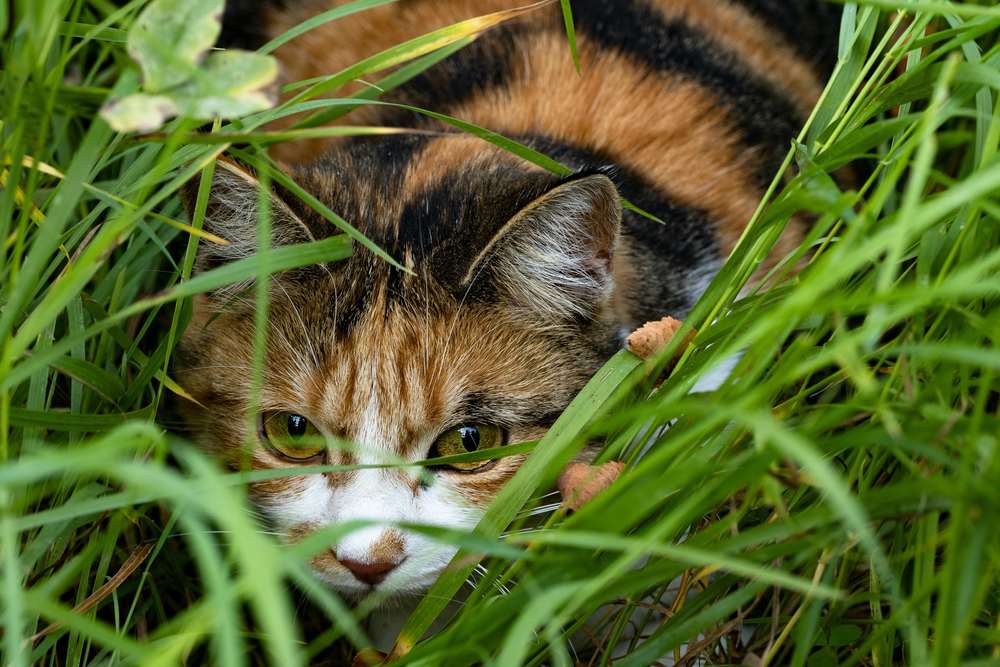
Cats may enjoy being outside even when the weather isn’t great, as long as they have shelter from the elements.
Even during inclement weather, some cats like spending time outdoors. It’s vital to design an outdoor space for a cat to use in all types of weather. Felines love sunbathing, so providing spots in sun-drenched places is imperative. Cats will appreciate shade when it’s too hot and covered areas when it’s raining.
Cat houses, wooden boxes, tables, and chairs can provide a vantage point plus shelter.
Also Read: How Cold Is Too Cold For Cats?
3. Climbing And Exploration Opportunities
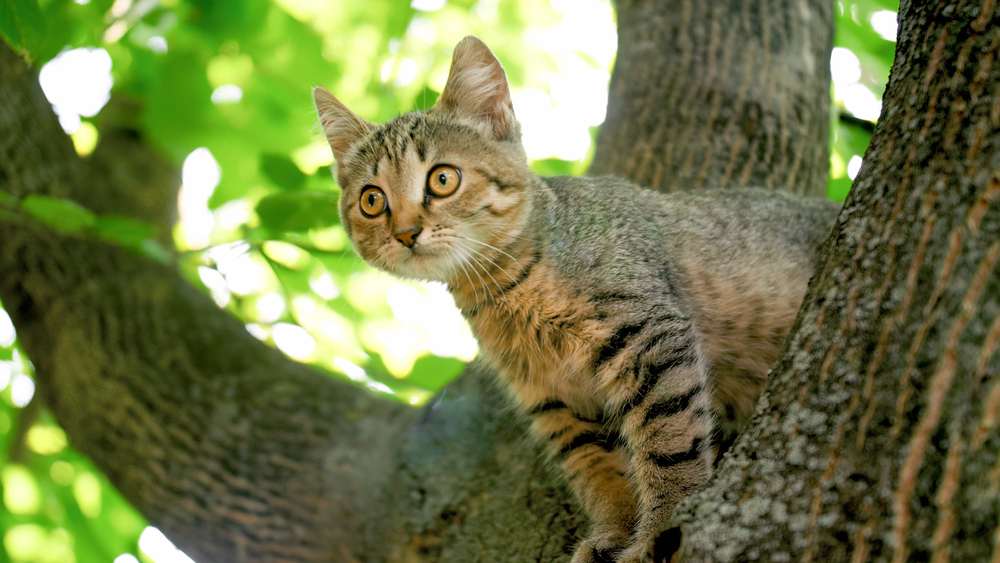
Cats enjoy places where they can climb and perch.
Cats are instinctive climbers who like to use their space three-dimensionally. Trellises, pergolas, tree platforms, and shelving attached to fences and walkways allow cats to climb, explore and rest while keeping them safe from predators.
Substrates like grass, soil, bark chips, concrete, and sand can offer exploration opportunities.
Also Read: Can Cats Climb Down Trees?
4. Fresh Drinking Water Sources
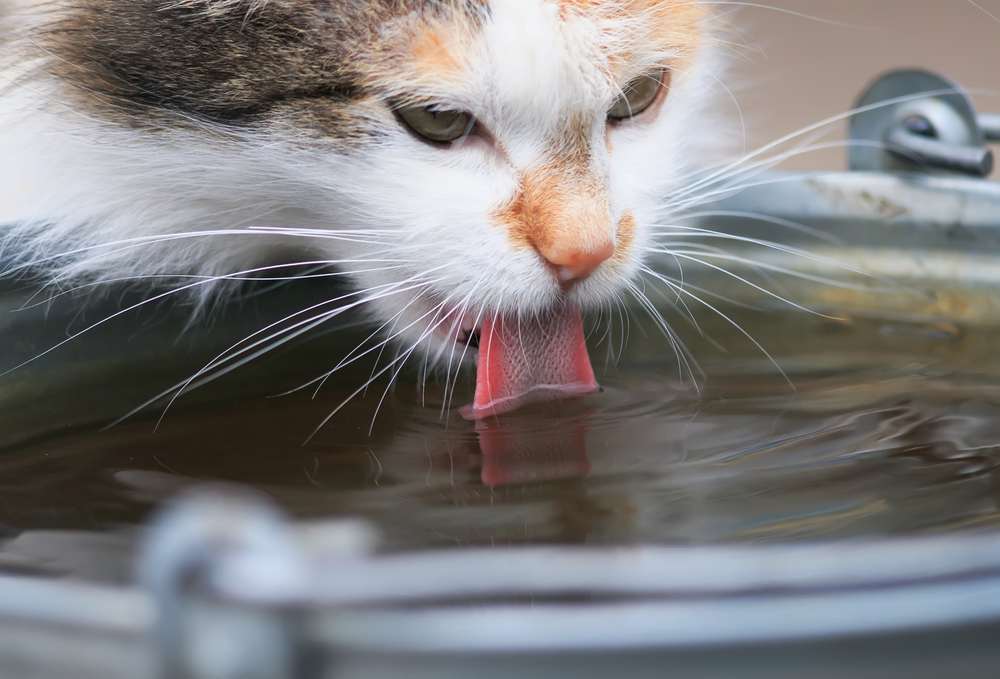
Cats do not like to share resources, so make sure that multi-cat homes have multiple drinking spots placed outside.
Offer many drinking vessels to reduce disputes between cats in safe spots.
Placing drinking containers outdoors or a water fountain to encourage cats to drink rainwater, which many enjoy.
Also Read: How Long Can A Cat Go Without Drinking Water?
5. Toileting Sites
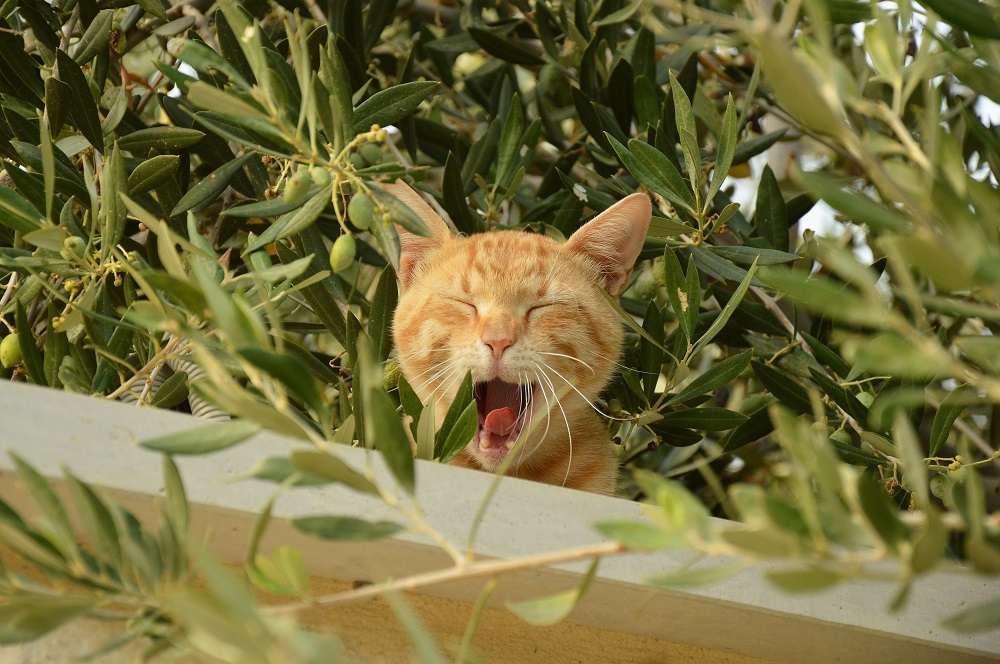
It’s possible in some situations, and with the right cat, to skip a litter box entirely and create a toilet space for your cat outside.
Cats are fastidious animals; many prefer to relieve themselves outdoors, far away from food and water. If you want to avoid keeping a litter box indoors, a custom-made toilet area will prevent a cat from going in the flower beds. You will still be able to track the cat’s output.
Choose a location where the cat feels safe and secure. Sand, woodchips, or soil with good drainage works well. Daily scooping is still required. Fencing, trellis, or plants can create seclusion from the rest of the garden.
Also Read: 6 Common Reasons Why Cats Pee Outside The Litter Box
6. Plants And Herbs Your Cat Will Adore

There are many cat-friendly plants to add to a garden, and some of them, cats absolutely love!
Various plants and herbs can affect native insects and birds, and cats. Herbs like basil, thyme, rosemary, cat grass, catnip, and lemon balm can elicit a positive welfare state. Cat-safe plants include rose, sunflower, honeysuckle, silver vine, and valerian. Cats that enjoy these herbs will display body rolling, licking, facial rubbing, and increased play.
Also Read: 10 Herbs That Are Toxic To Cats (And 7 That Are Safe)
7. Chemical Communication Opportunities
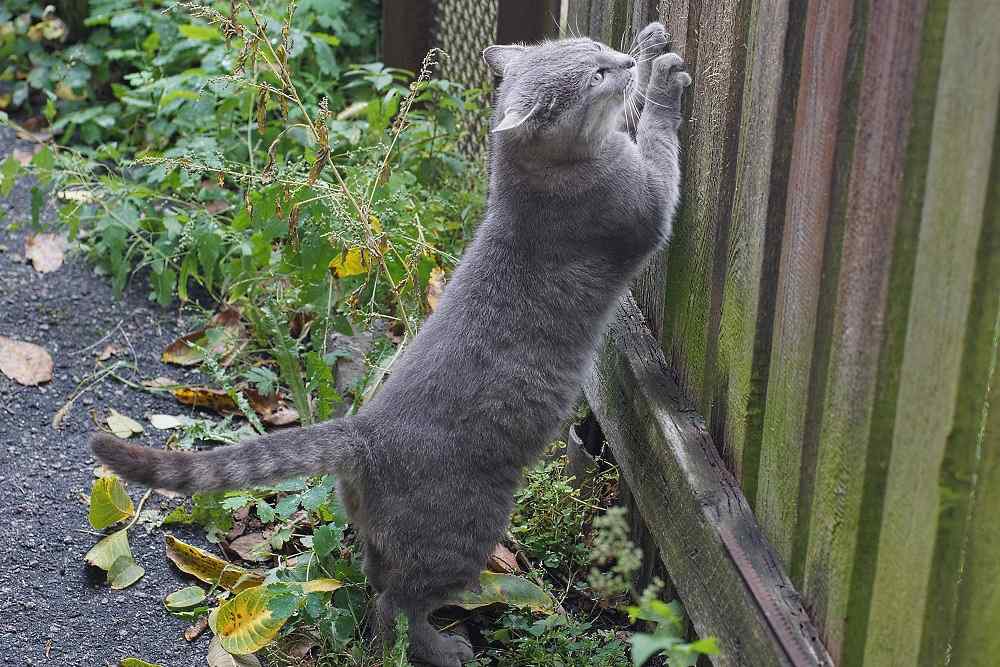
Cats love scratching and need proper areas where they can do this.
Cats love depositing chemical messages indoors and outdoors. Shrubbery can provide ideal spraying sites, while gate posts and planters may be beneficial for facial rubbing.
Scratching is very important for cats. They must keep their claws sharp, exercise their muscles and mark their territory to make themselves feel safe. Wooden posts, gates, crates, tree trunks, and large branches can make perfect scratching and perching sites.
Also Read: The 10 Best Scratching Posts In 2023
8. Places For Cat-People Interaction
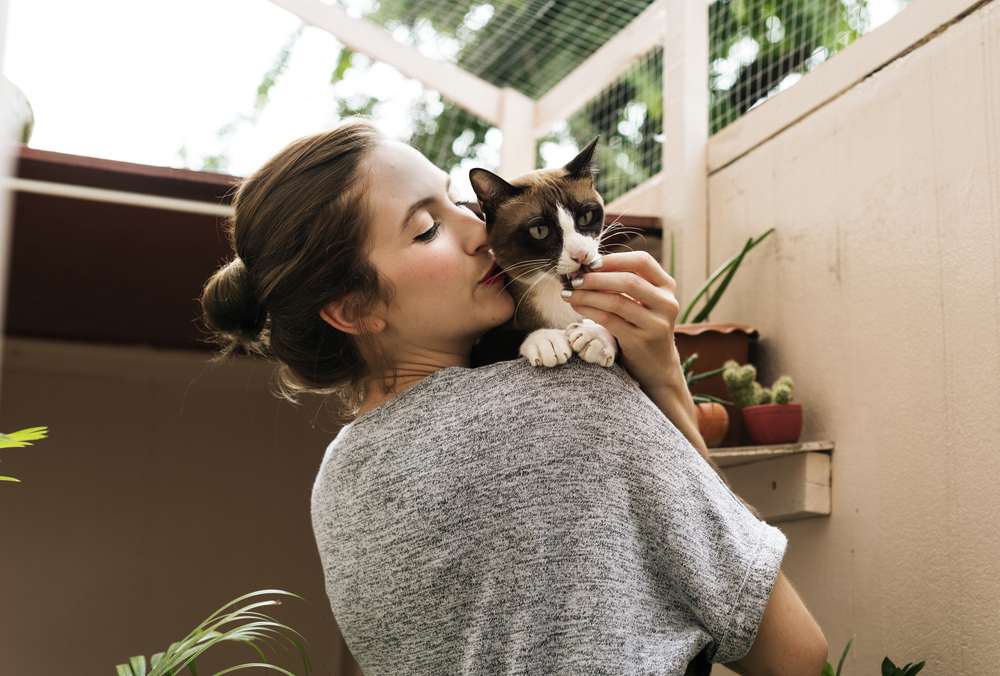
Creating a space where you and your cat can hang out together will help strengthen the bonds that you share.
A seating area in a secluded spot with a small table and chairs can encourage owners to spend time in the garden with their companions. For cats that enjoy interaction with people, it provides them with a source of outdoor social interaction.
What To Avoid In A Cat-Friendly Garden
Avoid the following plants and chemicals when designing your ultimate cat-friendly paradise.
1. Garden Plants And Flowers Toxic To Cats

Daffodils are poisonous to cats.
Although cats instinctively steer clear of plants that aren’t good for them, it’s better to be safe than sorry. Avoid planting lilies, foxglove, azaleas, daffodils, and tomato since those plants are poisonous.
Refer to the ASPCA website for a complete list of toxic and non-toxic plants for cats.
2. Pesticides And Herbicides

There are many effective ways to treat an outdoor area for pests that don’t include insecticides or herbicides.
Felines can get exposed to pesticides and herbicides by strolling through treated grass or scraping past wet foliage. They can also lick spills, chew grass, or munch on treated plants. If using insecticides, keep cats inside until the grass and shrubs have dried. According to a New York study, glyphosate concentration in cat urine was 2-fold higher than in dogs.
Reduce your cat’s exposure to herbicides and rodents by watering your plants and lawn in the morning. Use drip irrigation, mow the grass, and fertilize the yard often.
Sprinkle diatomaceous earth along the garden’s perimeter to keep snails, slugs, and fleas from vegetable patches. Place mice traps along walls and maintain food products in glass or steel containers. Cover compost or garbage bins to control pests.
Also Read: Insecticide Poisoning In Cats: Symptoms, Diagnosis & Treatment
3. Harmful Chemicals
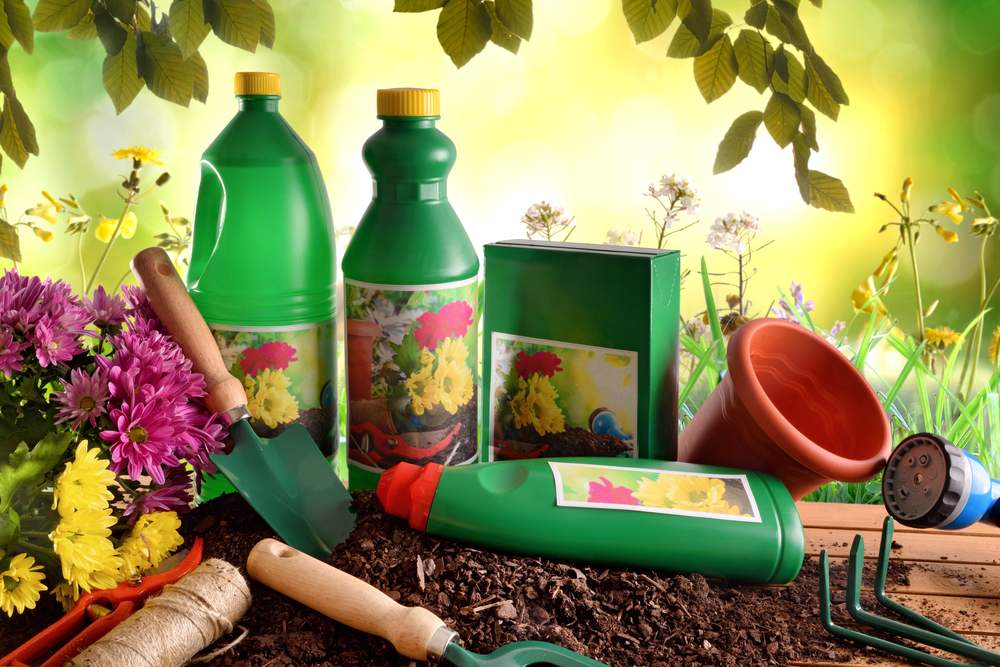
If your cat goes outside, always be cautious of the types of chemicals your cat might get into.
Avoid hazardous chemicals in the garden and outdoor spaces. Common dangerous substances are disinfectants, antifreeze, and home maintenance products. Cats can consume or brush against a treated surface and groom themselves.
Seek immediate veterinary advice if your cat ingests toxic chemicals or insecticides.
4. Extra Tips
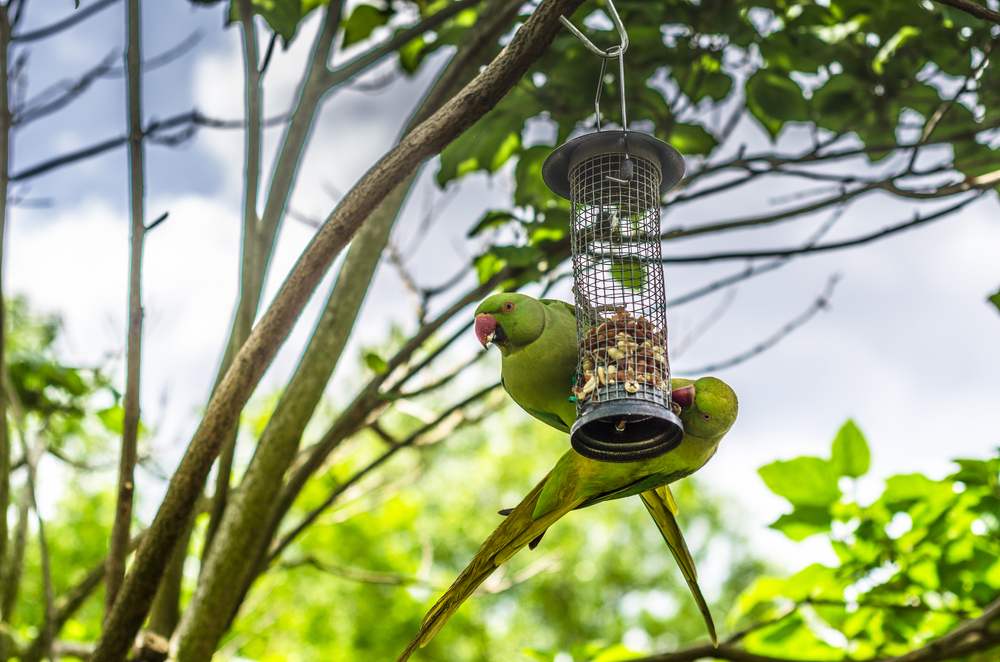
While cats may enjoy hunting outdoor wildlife, it’s important to protect birds and other native species from your cat while they are outside.
Protect birds and nature from predatory species like cats. If your cats roam, prevent them from going outdoors at night. Keep felines indoors in springtime when many species nest and care for their young.
Place bird seed feeders 16 feet away from grass and bushes. Hang feeders on a wire about 13 feet above ground between several trees.
Fulfill your cat’s need to hunt prey outdoors by playing with wand-type toys. Drag them through grass and shrubbery or strap strings with toys to low-hanging branches for recreation. Use puzzle feeders but remove any left-over food to dissuade rats.
Deter feline intruders from accessing your haven by scattering your cat’s poop around the garden boundaries. Also, placing plastic spikes on top of fences prevents other cats from entering the yard and resident cats from leaving. A microchip cat flap installed in the backdoor can prevent trespassers. A scarecrow motion-activated sprinkler may discourage stray cats from invading your territory.
Also Read: Why Do Cats Chirp At Birds?
Cat-Friendly Gardens: Final Thoughts

Cats that go outdoors enjoy an enriched lifestyle, but also risk injury and illness more often unless steps are taken to keep the outdoor area “cat-friendly.”
A cat-friendly garden is exhilarating and can compensate for inadequate indoor conditions. Outdoor time offers sensory stimulation and an outlet for cats to perform instinctive behaviors.
I hope we inspired you to revamp your outdoor spaces into an oasis that will strengthen your human-animal bond.
Also Read: How Much Catnip Should I Give My Cat & How Often Is Safe?
Frequently Asked Questions
Why do cats like to be outside?
Cats like to explore, and investigation forms part of surveying and preserving their territory. Felines allowed to explore the outdoors get to replicate natural hunting behaviors stimulating all their senses. The larger ecosystem provides them with the opportunity for physical exercise and mental stimulation they may lack indoors.
What are the benefits of making a cat friendly garden?
An enriched and secure cat-friendly garden benefits your cat’s welfare and safety. It reduces exposure to road traffic accidents and potential hazards. It’s a fantastic opportunity to increase the human-animal bond through social interactions.
How can I stop my cat from leaving my garden?
The best way to reduce the risk of your cat leaving the garden is to install cat-proof fencing with neighbors consent. A cat-proof fence can also prevent neighboring cats from entering your oasis.
Since all gardens vary in shape and size, what’s practical for one won’t work for another. You may need to add a section of fencing on top of the remaining fence. Gardens without current fencing may need a new perimeter fence built within the existing boundary.
If you choose not to fence your garden, sectioning a designated area with an outdoor enclosure may be an alternative option. Another way to get around is by letting your cat explore the yard on a harness and leash.
-
Animals, A. S. (2023, January 01). Toxic and Non-Toxic Plant List - Cats. Retrieved March 12, 2023, from ASPCA: https://www.aspca.org/pet-care/animal-poison-control/cats-plant-list
-
Bunch, D. S. (2012, August 01). Keep Pets Safe Around Pesticides. (O. S. University, Compiler) Oregon, USA. Retrieved March 20, 2023
-
Care, I. C. (2019, February 01). Cat friendly gardens. (I. CatCare, Compiler) UK. Retrieved March 25, 2023
-
Care, I. C. (2020, September 01). Module 5 Creating a cat friendly home. International Cat Care Advanced Feline Behaviour for Vet Professionals. UK. Retrieved March 10, 2023
-
ICatCare. (2018, July 30). Cats and poisons. Retrieved March 27, 2023, from International Cat Care: https://icatcare.org/advice/cats-and-poisons/
-
ICatCare. (2018, July 30). Poisonous plants. Retrieved March 18, 2023, from International Cat Care: https://icatcare.org/advice/cats-and-poisonous-plants/
-
Kannan, R. K. (2019, April 01). Widespread occurrence of glyphosate in urine from pet dogs and cats in New York State, USA. Science of The Total Environment, 659, 790-795. Retrieved March 28, 2023, from https://www.sciencedirect.com/science/article/abs/pii/S0048969718353506#!
-
Sarah L H Ellis, I. R. (2013). AAFP and ISFM Feline Environmental Needs Guidelines. Journal of Feline Medicine and Surgery, 15, 219-230. Retrieved March 26, 2023







